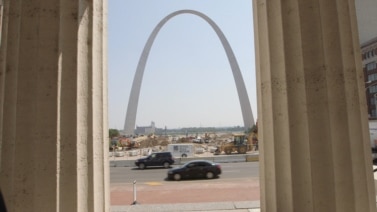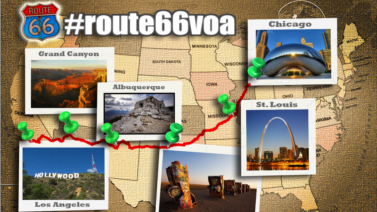When American officials established U.S. Route 66 in 1926, the road cut right through the southwestern city of Santa Fe, New Mexico. For 11 years, Route 66 travelers passed through Santa Fe, known as "the City Different,” with its mix of Native American, Spanish and Anglo cultures.
In 1937, the road was re-directed following a political dispute.
Santa Fe holds on to its Route 66 history, however. Historic motels and old street signs still mark the original path of the Mother Road.
And, it remains possible to take that original path up to Santa Fe. Many of today’s Route 66 travelers do just that.
Santa Fe is the oldest capital city in the United States. It was the capital of the Spanish kingdom of New Mexico, beginning in 1610. It was the capital of the province of Nuevo Mexico when Mexico became independent. And it was the capital of the New Mexico territory before it became a U.S. state.
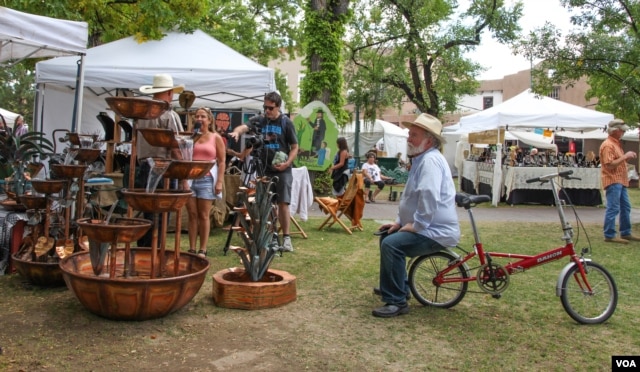
Frank McGuire is an artist from Tempe, Arizona. He has been visiting Santa Fe for decades.
“Originally this was settled by the Native Americans. There were Pueblo Indians that were here. And the Spanish came and this is actually the oldest capital in the United States. This was settled long before the East Coast was.”
The city is home to the country’s oldest church and the oldest house. Visitors can tour both. In the house, visitors get a feel for how Pueblo Indians in the area lived hundreds of years ago.
The Pueblo Indians built their villages with adobe brick. Adobe is a mix of mud and straw. It becomes very hard when it dries. Traditional Adobe buildings do not use frames. Most are one to two stories high.
In the 1920s, Santa Fe officials ordered that all buildings in the city be built with adobe in the Pueblo Indian style.
The city also retains beautiful examples of Victorian, Italian, and Spanish architecture.
It is this combination of cultures that helped give Santa Fe its most popular nickname, “the City Different.”
Artist Frank Maguire explains.
“So, you have the mixture of the Native Americans, the Spaniards, and then came the Mexicans, and then, of course, the Anglos came. So, to me, it has a broad culture. And [that] is why I would say that it has a city of difference. Because there are so many different cultures blended together here.”
Santa Fe’s food represents that blend of cultures. Traditional New Mexican cuisine is a mix of Native American and Hispanic influences.
One of the defining tastes is the New Mexico chile. Bunches of chiles often hang to dry outside of the adobe-style homes in Santa Fe.
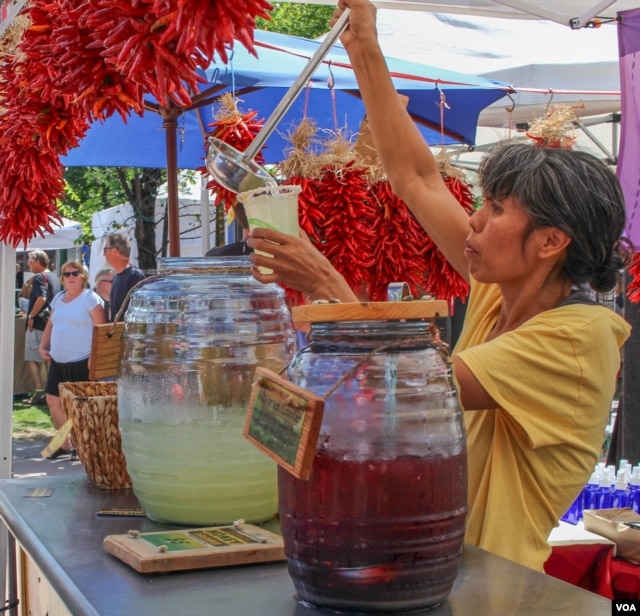
New Mexican chiles are red or green depending on when they are harvested. Chile sauce is served on top of many of the common dishes here. And, people quickly get used to hearing the question: “Red, green, or Christmas?” Diners choose between red chile sauce, green chile sauce, or both – the colors of Christmas.
Santa Fe’s Plaza has been the heart of the city for some 400 years. On most days, artists fill the Plaza with small tents offering pieces of art for sale – paintings, jewelry, rugs and much more.
Artists come to Santa Fe from all over the world. But there are many locals too. Santa Fe became a so-called “artist colony” in the 1920s. The city offered low-cost living and beautiful scenery. The landscape inspired artists.
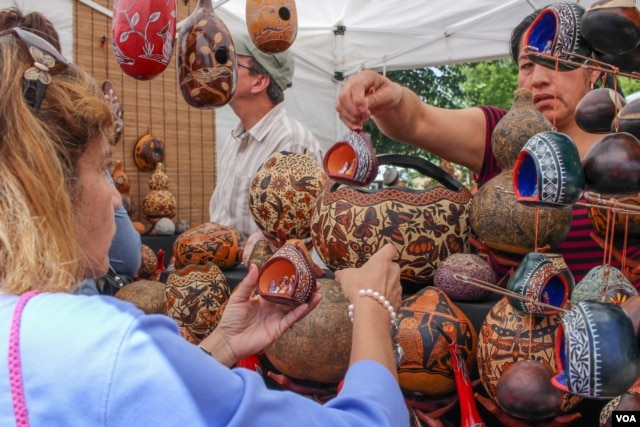
Today, the city of 150,000 people is home to hundreds of art galleries and many world-class art museums. One is dedicated to American artist Georgia O’Keeffe. She settled in Santa Fe in 1949 and lived there until her death in 1986. She became famous for her large paintings of brightly colored flowers. Much of her art reflects the nature and culture of New Mexico.
Roberto Marquez is an artist from Tucson, Arizona. He sells his handmade metal fountains in the Plaza. He looks forward to his Santa Fe visits for the weather and atmosphere.
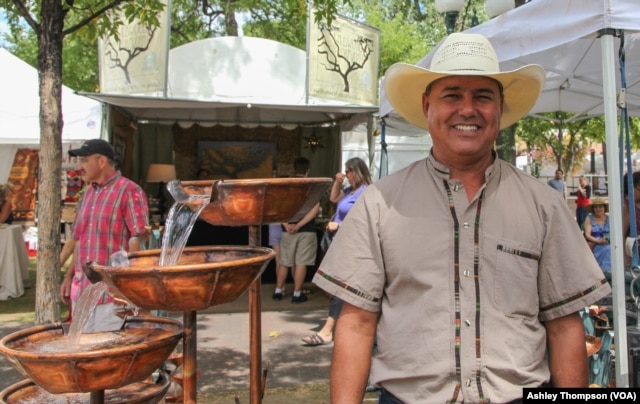
“I love Santa Fe. I love this weather. I love the people. And to me it’s like vacation. So I combine vacation and work and can’t ask for anything better.”
Bernadine Toya is from San Felipe Pueblo, an Indian reservation near Santa Fe. She often visits Santa Fe with her husband. He sells his art and bows and arrows at the Native American Vendors Program of Santa Fe’s Palace of the Governors. The building sits right along the Plaza.
"We just walk around and see what’s new. And there’s always something new. It’s very diverse, nowadays. And it’s…just very different from reservation life. And it’s very upbeat, nice energy.”
Frank McGuire is a fan, too.
“Santa Fe has kind of a rich history of art. I mean the Native Americans created beautiful art out of very simple tools and pigments thousands of years ago. And then, of course, the Spanish brought their art, which, some of it was from Spain and Italy because there was a mixture. And then the Anglos brought theirs. But the city has kind of a unique blend of cultures. You can kind of find it just roaming the streets here."
I'm Ashley Thompson.
And I'm Caty Weaver. Join us again next week for a report on Arizona's Route 66.
Words in This Story
Anglo - n. a white person who lives in the U.S. and is not Hispanic
Hispanic - adj. of or relating to Spain or to Spanish-speaking countries, especially those of Latin America.
pigment - n. a substance that gives color to something else
roam - v. to go to different places without having a particular purpose or plan


